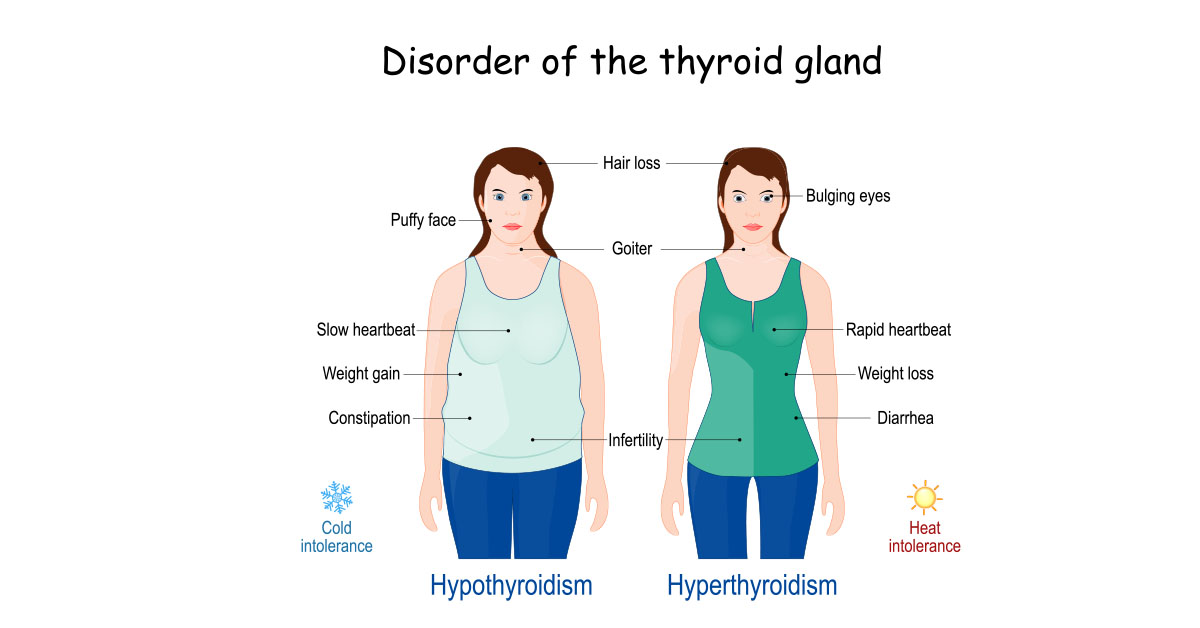To understand hypothyroidism is to understand what the thyroid gland is first. How does it work? What is its role? Then we get to realize its importance and likewise, the impact when it takes the hit. When thyroid hormone levels are low, a condition known as hypothyroidism may arise. But do not fret. Med Choice ensures we provide our best, “Todo Aruga sa Thyroid at Diabetes”. So, allow us to walk you through this and be empowered to know more.
The Thyroid
Visually, a healthy thyroid is like a butterfly-shaped organ measuring about 2 inches that lies in the neck located just above the windpipe. The thyroid gland is an important part of the endocrine system which makes chemicals called hormones that help control many of the body’s functions. Tunay na mahalaga ang thyroid, dahil it regulates our metabolism. That is the process which breaks down what we eat to make energy. It impacts how fast our heart beats, how deep we breathe, helps control body temperature and whether we gain weight or lose weight.

When something is not right with the thyroid, there are signs, both seen physically and felt by our body. Meaning, madali itong makita if you are guided on what to watch out for.
Studies were done in the past and based on statistics, a portion of the population may experience a problem in their thyroid during their lifetime. But of course, such conditions may be caused by an array of factors that may either be terminal (nakakamatay) or curable (gumagaling). These considered, we can note that the major issues may arise from the overproduction or underproduction of hormones, which depends on the health of the thyroid. Bear in mind though that before jumping into any conclusion, it is important to learn about it from reliable sources such as an expert or a medical specialist of the endocrine system.
Iwasan basta-bastang mangamba. Magtanong muna bago mag-alala. Remember, being informed does not mean you can self-diagnose nor self-medicate. Make sure you consult your doctor first.
Now, to shed more light on the topic…
What is hypothyroidism? Ano nga ba ito?
From its prefix “hypo” meaning less, hypothyroidism is generally a condition when there is not enough thyroid hormone. It means the thyroid gland is underactive which is why it cannot produce enough hormones.
Although this is often caused by an autoimmune disorder known as Hashimoto’s thyroiditis, where a persons’ cells attack the thyroid, it can also originate from any of, but not limited to the following:
- a congenital condition (mula-pagkapanganak),
- other health condition (such as Celiac disease, type 1 or type 2 diabetes, rheumatoid arthritis, or lupus),
- iodine deficiency,
- other disorders (i.e., of the pituitary gland or of the hypothalamus),
- or as a side effect of medications (for the heart, cancer, or bipolar disorder).
Moreover, it sometimes is caused by a combination of these or an inherited tendency coupled with other unidentified triggers. In some cases, it begins suddenly but, in most cases, it develops slowly over time.
Hypothyroidism may cause physical changes (mga pagbabagong madaling makita) that are also tell-tale signs you can watch out for. You may notice the following:
- dry and scaly skin
- thinning hair and eyebrows
- brittle nails
- puffy eyes
- weight gain
- enlarged thyroid, or goiter
Other symptoms are beyond appearances (wala sa pisikal) such as:
- slow-down in height growth rate
- intolerance of cold temperatures
- loss of libido (sex drive)
- pain,
- low heart rate
- heavy and irregular menstruation
- fertility problems
- numbness and a tingling sensation in the hand and fingers (carpal tunnel syndrome)
- alterations of taste, hearing, and vision
- change in voice
- fatigue or lethargy
- muscle and joint pain
- high cholesterol
- constipation
- memory problems
- depression
- confusion and loss of consciousness
- coma

These symptoms or indicators may not appear or be experienced all at once. It may be different depending on the age, sex, and other factors. Likewise, treatment may also vary.
Diagnosing hypothyroidism is done through conducting blood tests, imaging tests, ultrasound, or scans using radioactive iodine. Once confirmed, the main treatment or medication for people suffering from this condition is a prescription of thyroid hormone pills. For special cases, treatment may be more complex as it may be an individualized treatment plan that consists of hormone-replacement medications, dietary changes, supplements, stress relief, peptide therapy, along with other thyroid medications.
Go to MedChoice Pharma
MedChoice Pharma offers an array of products for thyroid diseases both hyperthyroidism and hypothyroidism such as:
- Carbimazole (NEOMERDIN®) for hyperthyroidism
- Methimazole (TAPDIN®) for hyperthyroidism
- Levothyroxine (THYDIN®) for hypothyroidism
- Propranolol HCl (INDIRIN®) as adjunct for hyperthyroidism and thyroid storm

Find more about these medication when you visit us online! Do you have inquiries? Contact us! You can send us a message through our website or send us an email.
Choose MedChoice Pharma where we provide better choices for better lives!
References
Healthline, (2022, July) The 6 Common Thyroid Problems & Diseases https://www.healthline.com/health/common-thyroid-disorders#common-problems
Mayo Clinic, (2022, December) Hypothyroidism (underactive thyroid) https://www.mayoclinic.org/diseases-conditions/hypothyroidism/diagnosis-treatment/drc-20350289
NHS, (2021, May) Underactive thyroid (hypothyroidism) https://www.nhs.uk/conditions/underactive-thyroid-hypothyroidism/treatment/
WebMD, (2023, May) What Does Your Thyroid Do? https://www.webmd.com/a-to-z-guides/what-does-thyroid-do
